We may not have the course you’re looking for. If you enquire or give us a call on 01344203999 and speak to our training experts, we may still be able to help with your training requirements.
Training Outcomes Within Your Budget!
We ensure quality, budget-alignment, and timely delivery by our expert instructors.
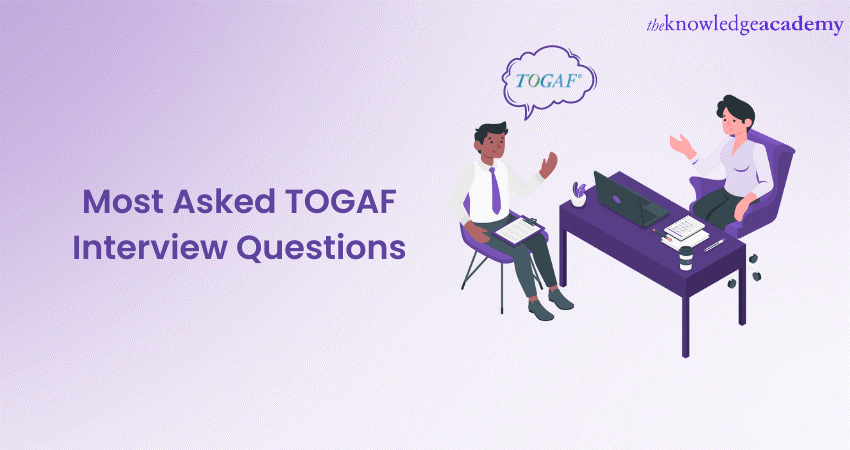
As the demand for TOGAF certified professionals continues, aspiring architects must familiarise themselves with the knowledge and expertise required to excel in interviews. In their journey of preparation most frequently asked TOGAF Interview Questions can become their helping hand.
Today, top-tier companies pay high salaries to TOGAF-certified professionals. According to Glassdoor, such professionals earn an average of £93,576 annually. Therefore, it is time to invest in such jobs and stand out in the highly competitive market.
Not sure where to start your preparation? Worry no more. Read this blog to learn about frequently asked TOGAF Interview Questions and answers that will prepare you for your dream job.
Table of Contents
1) TOGAF Interview Questions for beginners
2) TOGAF Interview Questions for intermediaries
3) TOGAF Interview Questions for professionals
4) Scenario-based TOGAF Interview Questions
5) General TOGAF Interview Questions
6) Conclusion
TOGAF Interview Questions for beginners
Did you recently graduate and are now looking to kick-start your Information Technology (IT) career as a fresher? If yes, then these interview questions and answers are made for you. Let's look at some of the top TOGAF Interview Questions and answers in detail:
1) Explain the importance of TOGAF in developing IT architecture.
TOGAF is important because it offers the following:
a) A methodology for creating, managing, and governing Enterprise Architectures
b) It promotes consistency, interoperability, and integration across organisations
c) TOGAF emphasises the importance of enterprise-wide integration and agility
d) It offers valuable resources, best practices, and certification for professionals
e) It helps optimise operations, drive organisational transformation, and make informed architectural decisions

2) How will you describe the term TOGAF Architecture?
TOGAF Architecture refers to the structured framework and methodology. TOGAF offers it for developing and aligning Enterprise Architectures. It encompasses multiple domains and emphasises integration and consistency.
3) What all parts does TOGAF contain?
TOGAF is divided into two main parts:
a) Part 1: This part, known as the "TOGAF Foundation," provides an overview of the framework and its key concepts.
b) Part 2: Referred to as the "TOGAF Certified," this part delves deeper into the practical application of TOGAF.
4) Why should one adopt TOGAF?
The following reasons explain why businesses should adopt TOGAF:
a) Standardised approach
b) Strategic alignment with business goals
c) Risk mitigation
d) Efficient and scalable
e) Fosters collaboration and effective communication among stakeholders
5) What do you understand by Enterprise Architecture?
Enterprise Architecture is the holistic and strategic discipline of designing and aligning an organisation's structure, processes, information systems, and technology infrastructure to achieve its business objectives. It provides a comprehensive blueprint that defines how various components of an organisation interact and work together to support its operations and strategic goals.
6) Explain the Zachman Framework.
The Zachman Framework is a structured and comprehensive approach to Enterprise Architecture. It provides a matrix-like framework that categorises architectural artefacts based on six perspectives: What, How, Where, Who, When, and Why. Answering these questions facilitates communication, collaboration, and understanding among Stakeholders. Additionally, the framework offers a structured approach for capturing, organising, and managing architectural artefacts.
7) What is TOGAF?
TOGAF is a widely adopted framework for Enterprise Architecture. It provides a structured methodology and best practices for creating, managing, and governing Enterprise Architectures. TOGAF helps organisations align their IT infrastructure with business goals, promote interoperability, and make informed architectural decisions.
8) Define Enterprise Architecture Roadmap. What information does it contain?
Enterprise Architecture Roadmap is a strategic plan that outlines the future direction and evolution of an organisation's Enterprise Architecture. It provides a clear path for implementing architectural changes and achieving the desired target state.
The roadmap contains information such as:
a) Current state assessment
b) Target state vision prioritised initiatives
c) Timeline
d) Resource requirements
e) Expected outcomes
9) Describe ITIL.
Information Technology Infrastructure Library (ITIL) is a widely adopted framework for IT Service Management (ITSM). It provides the best practices and guidelines for planning, delivering, and managing IT services in alignment with business objectives. The framework focuses on improving service quality, efficiency, and customer satisfaction by defining processes, roles, and responsibilities within ITSM.
10) Explain Gap Analysis.
Gap Analysis is a methodical assessment that compares the current state of an organisation or system with its desired future state. It identifies the gaps or discrepancies between the two and provides insights into the areas that need improvement or change.
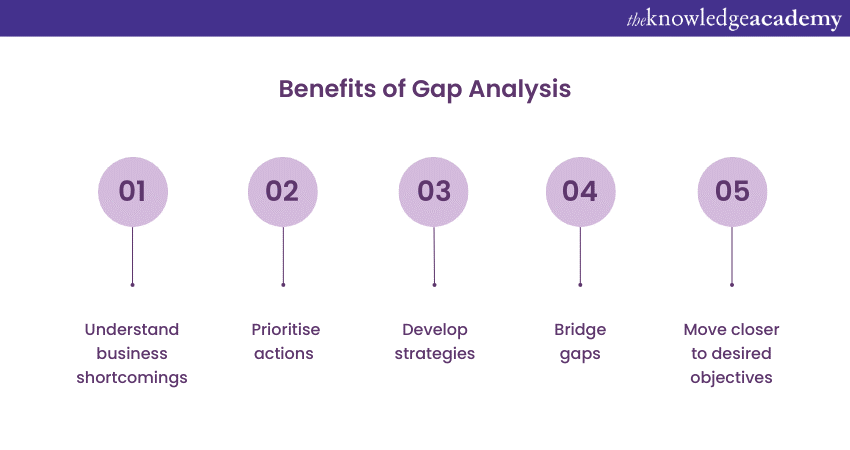
11) What do you mean by SOA?
Service-Oriented Architecture (SOA) is an architectural approach used to organise software applications and systems as a collection of services. It promotes loose coupling, reusability, and interoperability among services, enabling organisations to create flexible and scalable systems that adapt to changing business needs.
TOGAF Interview Questions for intermediaries
Do you possess an experience of three-four years and are looking to enhance your career further? Ace your interview with these Questions and answers on TOGAF:
12) Explain the importance of TOGAF Certification. How does the certification give an edge to the holder?
TOGAF certification is useful for the following reasons:
a) Industry recognition: This certification is globally recognised and respected in Enterprise Architecture.
b) Demonstrates expertise: Certification demonstrates a comprehensive understanding of TOGAF principles, methodology, and best practices, showcasing an individual's expertise in Enterprise Architecture.
c) Enhanced career opportunities: TOGAF Certification opens many career opportunities, including architecture roles, consulting engagements, and leadership positions, as organisations increasingly seek certified professionals.
d) Improved job performance: The certification equips professionals with knowledge and skills necessary to excel in Enterprise Architecture roles, leading to improved job performance and better outcomes for architectural projects.
e) Networking and collaboration: Certification offers opportunities to connect with a community of TOGAF-certified professionals. It enables them to share knowledge, expand networks, and access resources and best practices.
f) Consistent and standardised approach: Certified professionals follow a standardised approach to Enterprise Architecture development, ensuring consistency and high-quality deliverables across projects and organisations.
This certification validates an individual's competence in Enterprise Architecture and provides a pathway for professional growth, career advancement, and increased success in the field.
13) Define Architecture Vision. What kind of information does it contain?
The Architecture Vision is a key phase in the architectural development process that establishes an architecture initiative's overall strategic direction and goals. It defines a high-level view of the desired future state of the architecture. The Architecture Vision contains the following information:
a) Business goals and drivers
b) Stakeholder needs
c) Key architectural principles
d) Description of the intended outcomes and benefits of the architecture
14) How will you evaluate whether a solution complies with the Enterprise Architecture?
To evaluate compliance with Enterprise Architecture, consider these factors:
a) Architecture principles: Assess if the solution aligns with established principles and guidelines.
b) Standards and policies: Verify adherence to technology standards, security policies, and data management guidelines.
c) Integration and interoperability: Ensure seamless integration with existing systems and applications.
d) Consistency with artefacts: Check alignment with reference models, frameworks, and design patterns.
e) Impact analysis: Assess potential impacts on dependencies, scalability, performance, and future changes.
f) Stakeholder validation: Seek feedback and validation from key Stakeholders.
15) Explain what SOA patterns are.
SOA patterns are reusable architectural designs and solutions that address common challenges and problems encountered in their implementations. These patterns provide guidance and best practices for designing and implementing services, service compositions, and service interactions within an SOA environment. Further, they help architects and developers make informed design decisions, ensure scalability, maintainability, and interoperability of services, and promote the overall success of SOA initiatives.
16) List the contents of the Transition Architecture.
The Transition Architecture includes the following:
a) Transition Architectural definition: Detailed description of changes needed for the transition.
b) Transition Architectural roadmap: Plan outlining the sequence and timeline of changes.
c) Transition Architectural building blocks: Modular components for the transition.
d) Implementation and migration strategy: Strategy for executing the transition.
e) Gap analysis: Identifying gaps between current and target states.
f) Dependencies and interactions: Analysing dependencies and interactions between elements.
17) What is included with the architecture content framework?
The Architecture Content Framework provides a structured approach for organising and managing architectural artefacts. It includes the following components:
a) Architecture vision: Describes the architecture initiative's desired future state and strategic goals.
b) Architecture definition document: Provides a comprehensive architecture description, including business, data, application, and technology perspectives.
c) Architecture requirements specification: Outlines the specific requirements and constraints the architecture must fulfil.
d) Architecture roadmap: Offers a plan and timeline for implementing the architecture, including transition states and milestones.
e) Architecture building blocks: Modular components that represent the key elements of the architecture, such as systems, applications, or processes.
f) Architecture patterns: Reusable design solutions that address common architectural challenges.
g) Architecture principles: Guiding statements that inform decision-making and shape the architecture.
18) Differentiate between TOGAF and Zachman
The following are the Differences Between TOGAF and Zachman:
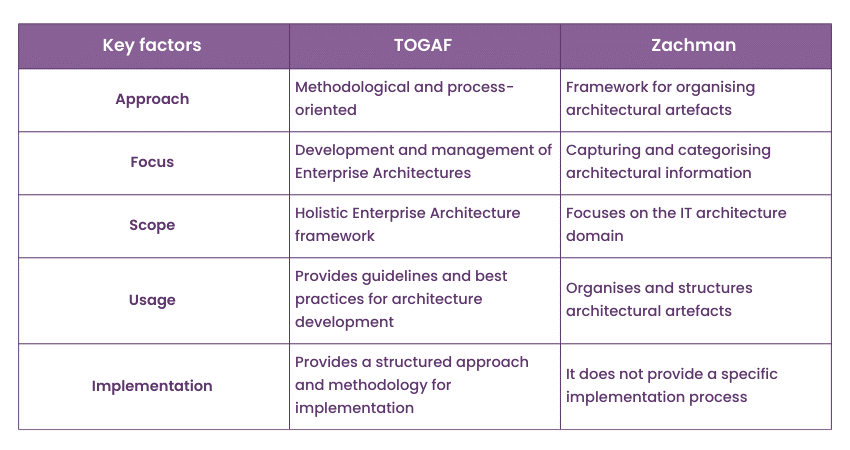
19) What terms are related to views?
The following are the terms related to views in the Enterprise Architecture include:
a) Architectural view: A representation or perspective of the architecture that focuses on specific aspects or concerns, such as business, data, application, or technology.
b) Stakeholder view: Represents the perspective and requirements of specific stakeholders, such as business owners, IT specialists, or end-users.
c) Current state view: Describes the existing architecture, including its components, relationships, and capabilities.
d) Target state view: Outlines the desired future state of the architecture, including the envisioned changes, improvements, and outcomes.
e) Transition state view: Depicts the intermediate steps and milestones required to transition from the current state to the target state.
20) How to apply the TOGAF principles to the enterprise?
TOGAF principles can be applied to the enterprise by:
a) Aligning with business goals: Ensuring that TOGAF Business Architecture initiatives are driven by and aligned with the organisation's strategic goals and objectives.
b) Enabling business continuity: Designing architectures that support the continuity of business operations and enable rapid recovery in case of disruptions or failures.
c) Promoting interoperability: Facilitating the integration and interoperability of systems and applications within the enterprise, enabling seamless data exchange and collaboration.
d) Ensuring cost-effectiveness: Considering the financial implications of architecture decisions, optimising resource utilisation, and identifying cost-effective solutions.
e) Managing change: Anticipating and managing the impact of architectural changes on the organisation, including organisational structure, processes, and culture.
f) Fostering innovation: Encouraging innovation through architectural designs that support adopting emerging technologies, exploration of new business models, and competitive advantage.
21) What is meant by TOGAF TRM?
TOGAF TRM stands for TOGAF Technical Reference Model. It is a component of the TOGAF framework that provides a standardised reference model for developing technology infrastructure and software applications.
The TRM defines a set of standard components, their relationships, and interactions, serving as a blueprint for designing and aligning technology solutions within an Enterprise Architecture. It helps organisations ensure interoperability, consistency, and strategic alignment of their technology infrastructure while facilitating the integration and management of IT systems.
22) List reasons why Enterprise Architecture is valuable to businesses.
Enterprise architecture is valuable to businesses because of the following reasons:
a) Aligns business goals and technology initiatives
b) Improves operational efficiency and cost savings
c) Enables agility and adaptation to change
d) Mitigates risks and ensures security and compliance
e) Facilitates informed decision-making
f) Drives innovation and exploration of new opportunities
g) Enhances stakeholder communication and collaboration
Get in-depth knowledge of implementing the TOGAF framework efficiently. Register for our TOGAF® Foundation and Practitioner - Practitioner Training now!
TOGAF Interview Questions for professionals
You must always remain updated with the technology market, even if you have significant experience in the domain. If you are a professional looking to change jobs, then read the following questions:
23) Can you say that TOGAF works as a skeleton for Enterprise Architecture? If yes, why?
Interviewers often ask this question to check whether the candidate understands the importance of TOGAF in modern-day organisations. You can reply in affirmative or negative but remember to give a good reason for your answer. You can say the following:
Yes, in my opinion, TOGAF works as a skeleton for Enterprise Architecture. It provides a structured framework and methodology. It also offers a set of guidelines, principles, and best practices for creating, implementing, and managing architectures.
Further, TOGAF's modular structure allows organisations to tailor and adapt the framework to their needs. This provides a foundation to build and evolve their Enterprise Architecture. It serves as a comprehensive reference and guide. Therefore, it ensures consistency, alignment, and efficiency in architecture development processes, enabling organisations to address complex architectural challenges effectively.
24) Who are the ultimate beneficiaries of TOGAF?
This question may seem simple to many candidates; however, it is not. If you analyse the question carefully, it has two dimensions to it. Here, the interviewer expects you to describe the results a business can expect from adopting TOGAF. Read the following to understand the best way to answer this question:
The ultimate beneficiaries of TOGAF are organisations that adopt and implement it. The framework helps organisations achieve effective Enterprise Architecture, aligning business and IT, enabling efficient decision-making, improving operational efficiency, mitigating risks, and driving innovation.
Ultimately, the organisation and its Stakeholders, including employees, customers, and partners, enjoy the benefits of a well-designed and strategically aligned architecture that supports business goals and enables sustainable growth.
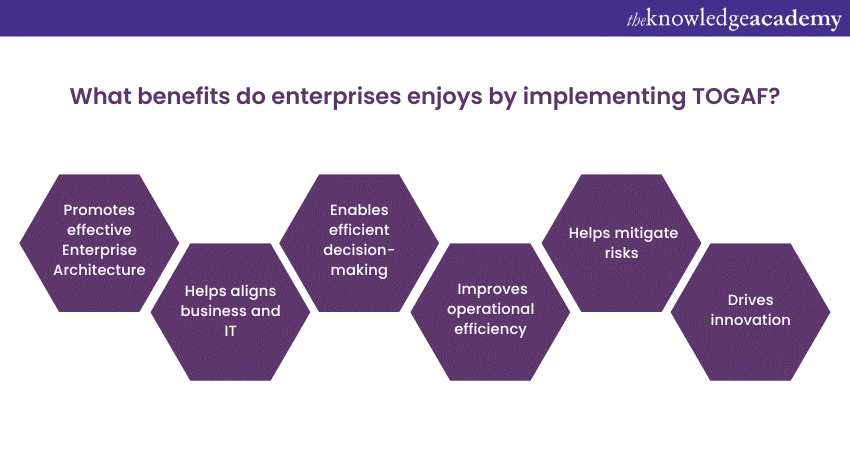
25) Describe the Preliminary Phase of building an Enterprise Architecture (EA) in detail.
The preliminary phase of building an Enterprise Architecture (EA) involves the following key activities:
a) Understanding the business context: Gathering information about the organisation's business goals, strategies, and operational context to establish a foundation for the EA initiative.
b) Defining scope and objectives: Clearly defining the scope of the EA effort, including the areas and aspects of the organisation that will be covered, and setting specific objectives and desired outcomes.
c) Identifying stakeholders: Identifying and engaging with key stakeholders, such as business leaders, IT teams, and subject matter experts, to understand their perspectives, requirements, and expectations.
d) Establishing governance framework: Developing a governance framework that outlines the decision-making structure, roles, responsibilities, and processes for managing the EA initiative.
e) Building EA Team and resources: Assembling a team of skilled professionals and allocating resources necessary for executing the EA initiative, including tools, infrastructure, and documentation templates.
f) Defining approach and methodology: Selecting an appropriate EA approach and methodology, such as TOGAF, and defining the processes and activities that will be followed during the EA development lifecycle.
g) Creating a communication plan: Developing a communication plan to ensure effective communication and collaboration with Stakeholders, including regular updates, workshops, and feedback mechanisms.
26) List activities relating to security within the technology architecture phase of ADM.
The activities related to security in the technology architecture phase of the Architecture Development Method (ADM) include:
a) Security Requirements Analysis
b) Security Architecture Development
c) Security Risk Assessment
d) Security Solution Evaluation
e) Security Integration and Testing
f) Security Compliance and Governance
27) Do requirements reduce once the production is done?
The duty of TOGAF professionals does not end with producing the product. The knowledge of the processes after production is equally important. Interviewers often ask this question to test the candidate's awareness of all TOGAF ADM phases:
Requirements are typically not reduced after production; they are refined and updated based on feedbacbk and real-world usage. The post-production phase allows organisations to gather insights, analyse user feedback, and identify areas for improvement.
This iterative process helps refine the requirements, prioritise enhancements, and better align the solution with user needs and business goals. The goal is continually optimising and enhancing the product or system based on the insights gained from its deployment and usage.
Learn how to implement TOGAF ADM techniques effectively. Register for our TOGAF® Foundation And Practitioner Training.
28) Can you describe the architectural domains of TOGAF?
The architectural domains of TOGAF The architectural domains of TOGAF are as follows:
a) Business Architecture: Focuses on understanding and defining the organisation's business strategy, structure, processes, and goals. It involves analysing business capabilities, identifying Stakeholders, and aligning business objectives with the overall architecture.
b) Data Architecture: Deals with the organisation's data assets, including models, databases, data governance, and data integration. It involves defining data entities, relationships, and standards to ensure consistency, integrity, and accessibility.
c) Application Architecture: Addresses the organisation's application portfolio, including software applications, interactions, and interfaces. It involves defining application components, their functionalities, and their relationships, as well as identifying technology platforms and integration approaches.
d) Technology Architecture: Encompasses the hardware, software, and infrastructure components that support the organisation's IT environment. It involves defining technology standards, platforms, and infrastructure configurations to meet the organisation's technical requirements.
29) What are the activities included in the migration planning phase?
The activities involved in the migration planning phase of the Architecture Development Method (ADM) include:
a) Defining migration strategies: Developing a strategy that outlines the approach and sequence for migrating from the current architecture to the target architecture.
b) Assessing migration risks and dependencies: Identifying and analysing risks, dependencies, and potential challenges associated with the migration process.
c) Creating a transition architecture: Developing a detailed plan that defines the intermediate states and milestones necessary to achieve the target architecture.
d) Planning for data migration: Developing a strategy and plan for migrating data from the existing systems to the new architecture, ensuring data integrity, quality, and compatibility.
e) Establishing governance and change management: Defining governance mechanisms and change management processes to ensure proper oversight, stakeholder engagement, and effective communication during the migration process.
f) Identifying and mitigating impacts: Assessing the impacts of the migration on various stakeholders, systems, processes, and services and implementing measures to mitigate any adverse effects.

30) What does a good Enterprise Architecture vision or mission statement look like?
This question is particularly asked the candidates to test candidate's skills such as creative thinking, problem-solving, solution centric, etc. They look forward to an answer demonstrating the candidate's skills and knowledge of developing a vision statement. Here's how to answer this question:
A good Enterprise Architecture vision or mission statement typically possesses the following characteristics:
a) Clear and concise: It should convey the purpose and direction of the Enterprise Architecture clearly and concisely, using concise language, easily understandable by stakeholders.
b) Alignment with business goals: It should align the Enterprise Architecture with the strategic goals and objectives of the organisation, demonstrating how it supports and enables the achievement of those goals.
c) Forward-looking: It must have a future-oriented perspective, emphasising the organisation's commitment to innovation, digital transformation, and staying ahead of the competition.
d) Customer-focused: It should focus on delivering value to customers and enhancing their experience, showcasing the organisation's dedication to customer satisfaction.
e) Inspirational and motivating: It must inspire and motivate stakeholders by presenting an aspirational vision, giving you a purpose and getting you excited about the possibilities the Enterprise Architecture enables.
f) Measurable: It should include quantifiable outcomes or objectives that can be tracked and evaluated, enabling the organisation to assess the progress and success of the Enterprise Architecture initiatives.
31) Differentiate between TOGAF and ITIL.
The following table shows the differences between TOGAF and ITIL:
|
Key factors |
TOGAF |
ITIL |
|
Focus |
Enterprise Architecture |
IT Service Management |
|
Scope |
Broad and holistic, covering overall enterprise architecture, including business, data, application, and technology aspects |
ITIL specifically focus on IT Service Management processes and practices |
|
Purpose |
Provides a framework and methodology for developing and managing enterprise architectures |
Offers best practices and guidelines for delivering IT services effectively and efficiently |
|
Implementation |
Guides developing architecture artefacts and frameworks |
Offers guidance for implementing IT service management processes, roles, and functions |
|
Framework layers |
ADM (Architecture Development Method) consists of multiple phases and iterations |
Service Lifecycle approach with distinct stages for service strategy, development, transition, operation, and continual service improvement |
|
Industry adoption |
Widely adopted across various industries and organisations globally |
Widely adopted as a de facto standard for IT service management, especially in IT and IT service provider organisations |
|
Certification |
TOGAF certification is available for individuals to demonstrate their knowledge and proficiency in enterprise architecture |
ITIL certification is available for individuals to validate their understanding and expertise in IT service management practices |
Want to know more about ITIL frameworks and IT service management? Register for our comprehensive ITIL® Training now!
32) How will you evaluate the success of an architectural solution?
Enterprise architects must consistently evaluate while working for the specific business model. This question aims to assess the candidate's capability of scanning architectural solutions. It also aims at evaluating whether they conform to a successful design.
Although you can answer this question by saying that a compliance assessment test is the solution, you can give a descriptive answer. Here's what you can say:
To evaluate the success of an architectural solution, I would do the following:
a) Conduct a compliance assessment to cross-check the security infrastructure, tools, and software used to construct the design
b) Define and measure key performance indicators (KPIs)
c) Gather stakeholder feedback
d) Monitor technical performance
e) Assess alignment with business goals
f) Conduct a Return on Investment (ROI) analysis
g) Emphasise continuous improvement
33) Briefly explain GDPR.
GDPR stands for General Data Protection Regulation. It is a comprehensive data protection law enacted by the European Union (EU) in 2018. GDPR aims to strengthen data protection rights, enhance transparency and accountability, and ensure a consistent approach to data privacy across EU member states.
It has profoundly impacted organisations worldwide, requiring them to implement robust data protection measures, prioritise individuals' privacy rights, and establish effective data governance practices.
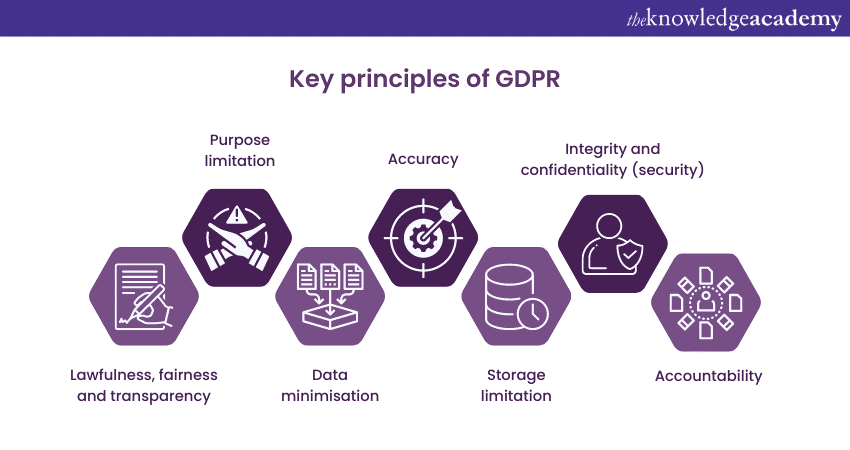
Scenario-based TOGAF Interview Questions
Scenario-based questions are often asked to evaluate the candidate's interpersonal skills and how well they fit the organisation's working environment. Therefore, to demonstrate your competency, you must be ready to answer all types of questions that come your way. Here are a few scenario-based TOGAF Interview Questions and answers to help you prepare for your next interview:
34 Your team has changed their goal, and it is impacting your work. How will you approach a situation like this?
This question aims to testify to your adaptability and acceptance at work. If you are an experienced candidate, be ready to answer this question in a TOGAF interview. Remember that you give an honest and genuine answer to this question. Although a situation like this can be challenging, try to provide an answer with a positive approach to the problem.
However, if you haven't faced a situation like this, talk about possible solutions that you will give if such a situation occurs. The following will help you understand the best way to answer this question:
If my team changes their goal, it is obvious that my work will be grounded back to zero. Though it may be an exhausting task, I will do the following:
a) Understand the reasons behind the change
b) Communicate and collaborate with stakeholders
c) Realign strategies and plans to accommodate the new goal
d) Mitigate risks and optimise outcomes
e) Monitor and adapt to ensure alignment with the evolving goal
35) Talk about an instance where you persuaded a senior executive to perform analysis.
Interviewers often ask this question to professionals with previous work experience. They want to evaluate your acceptance, communication and persuasion skills. Critical thinking and other abilities may also be tested with this question. Therefore, it is essential to be honest while answering this question. Here's how you can answer this question:
When I encountered a situation where I needed to persuade a senior executive to approve and support conducting a comprehensive analysis, I approached it in the following manner:
Firstly, I focused on building a solid case by highlighting the potential benefits of the analysis. I emphasised how it could provide valuable insights into our current technology environment, identify inefficiencies, and uncover opportunities for improvement.
Next, I provided a clear and concise plan outlining the analysis's approach, methodology, and expected deliverables. Throughout the process, I ensured an open and transparent communication. While doing so, I also listened to the executive's perspective and acknowledged their expertise and experience.
36) How would you stand for a disliked verdict of yours?
To work in a team setting, convincing the stakeholders is an important task. However, this may not be a piece of cake. You will need to work with people having different mindsets. You will be asked this question to test your verbal skills regarding convincing and other personal traits.
Therefore, while answering the question, do not sound repulsive. Instead, answer the question in the following manner:
If the team members do not like my verdict, I will first articulate my perspective clearly. I will provide evidence that supports my point. If the team still dislikes my verdict, I will understand their perspective and take feedback. At the same time, I will give potential solutions or suggestions that address the concerns raised in the verdict.
Note: If you have previous work experience, you can quote an incident you handled successfully.
General TOGAF Interview Questions
Whether you are a fresher or an already working professional with experience, there are some common questions that interviewers ask every candidate. Although these questions may seem easy from the surface level, they are often asked to evaluate the candidate's interpersonal skills. Here are some of the interview questions generally asked:
37) Please introduce yourself.
The introduction can be as simple and complicated as you make it. Rember to be honest while talking about yourself, and do not provide false information. Also, refrain from giving extremely personal information unless asked, like about your family background. You can talk about the following:
a) Personal information like name, place of birth, interests and hobbies
b) Educational qualifications, particularly your most recent degree or qualification. Add academic achievements (if any)
c) Previous job role where you should particularly mention your key achievements
d) Strengths and weaknesses (do not exaggerate)
Answer this question with confidence. It is the first question that interviewers ask. Therefore, demonstrating confidence can make an excellent first impression on them.
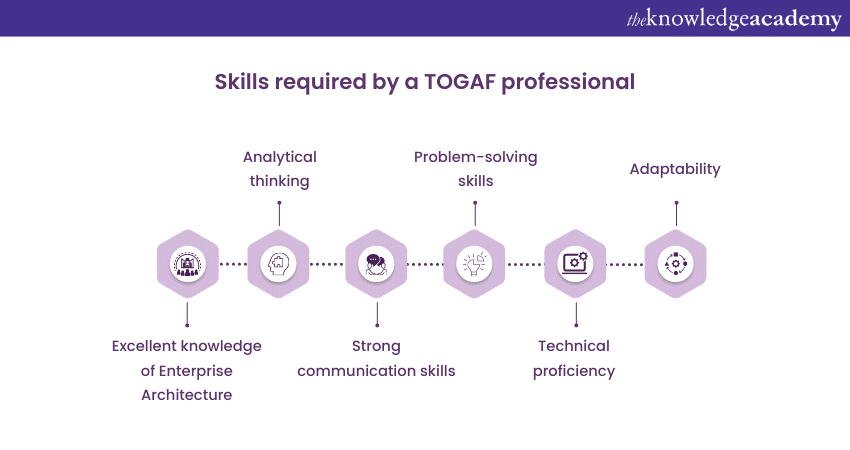
38) What are some important skills required to implement the TOGAF framework successfully?
This question is a little tricky as the interviewers are not looking for you to give them a list of skills. Instead, they want to know where you have demonstrated those skills. Some of the skills that you can talk about are as follows:
a) Excellent knowledge of Enterprise Architecture
b) Analytical thinking
c) Strong communication skills
d) Problem-solving skills
e) Technical proficiency
f) Adaptability
Note: Remember, mention only those skills that seem acceptable for the role rather than throwing words in the air.
39) What are your strengths and weaknesses?
Strength and weakness question is often asked to know the candidate's capabilities and whether they can have an accepting attitude. Therefore, while answering this question, it is essential to be realistic. Remember, do not exaggerate your strengths, and never hide your weaknesses.
Ensure the interviewer that you will work on your weaknesses and try to overcome them. Providing examples while discussing your strengths and weaknesses is also recommended.
40) What are the roles and responsibilities of a TOGAF professional?
Roles and responsibilities of a TOGAF professional include:
a) Enterprise Architect: Leading Enterprise Architecture development and implementation using TOGAF. It also includes defining principles, creating models, and aligning architecture with business goals.
b) Architecture governance: Establishing and maintaining governance processes to ensure compliance with standards and guidelines.
c) Stakeholder engagement: Engaging stakeholders, gathering requirements, and facilitating collaboration for architectural decisions.
d) Architecture development: Creating and maintaining architectural artefacts, documenting designs and strategies.
e) Risk assessment: Identifying and managing risks associated with architecture and developing mitigation strategies.
f) Change management: Managing architectural changes, planning and executing change activities.
g) Training and mentoring: Guiding and supporting teams, conducting training sessions and workshops.
h) Facilitating improvement: Staying updated, improving processes, methodologies, and frameworks.
i) Collaboration: Collaborating with IT, business units, and leadership to align architectural initiatives.
j) Compliance and quality assurance: Ensuring compliance with standards and conducting quality assurance reviews.
Conclusion
Preparing for TOGAF interviews is crucial for individuals aspiring to excel in the field of enterprise architecture. Candidates can confidently demonstrate their knowledge and expertise by familiarising themselves with the most commonly asked TOGAF Interview Questions.
Gain a deep understanding of business architecture techniques and best practices within the TOGAF framework. Register for our TOGAF® BA Foundation Training now!
Frequently Asked Questions
Upcoming Business Improvement Resources Batches & Dates
Date
 TOGAF® Foundation and Practitioner Training
TOGAF® Foundation and Practitioner Training
Sat 3rd Aug 2024, Sun 4th Aug 2024
Mon 5th Aug 2024
Mon 12th Aug 2024
Sat 17th Aug 2024, Sun 18th Aug 2024
Mon 19th Aug 2024
Mon 2nd Sep 2024
Sat 7th Sep 2024, Sun 8th Sep 2024
Mon 9th Sep 2024
Mon 16th Sep 2024
Sat 21st Sep 2024, Sun 22nd Sep 2024
Sat 5th Oct 2024, Sun 6th Oct 2024
Mon 7th Oct 2024
Mon 14th Oct 2024
Mon 21st Oct 2024
Sat 2nd Nov 2024, Sun 3rd Nov 2024
Mon 4th Nov 2024
Mon 11th Nov 2024
Sat 16th Nov 2024, Sun 17th Nov 2024
Mon 18th Nov 2024
Mon 2nd Dec 2024
Sat 7th Dec 2024, Sun 8th Dec 2024
Mon 9th Dec 2024
Mon 16th Dec 2024
Mon 6th Jan 2025
Mon 27th Jan 2025
Mon 3rd Feb 2025
Mon 10th Feb 2025
Mon 17th Feb 2025
Mon 24th Feb 2025
Mon 3rd Mar 2025
Mon 10th Mar 2025
Mon 17th Mar 2025
Mon 24th Mar 2025
Mon 31st Mar 2025
Mon 7th Apr 2025
Tue 22nd Apr 2025
Tue 6th May 2025
Mon 12th May 2025
Mon 19th May 2025
Mon 2nd Jun 2025
Mon 9th Jun 2025
Mon 16th Jun 2025
Mon 23rd Jun 2025
Mon 7th Jul 2025
Mon 21st Jul 2025
Mon 28th Jul 2025
Mon 4th Aug 2025
Mon 11th Aug 2025
Mon 18th Aug 2025
Mon 1st Sep 2025
Mon 8th Sep 2025
Mon 15th Sep 2025
Mon 22nd Sep 2025
Mon 29th Sep 2025
Mon 6th Oct 2025
Mon 13th Oct 2025
Mon 20th Oct 2025
Mon 27th Oct 2025
Mon 3rd Nov 2025
Mon 10th Nov 2025
Mon 17th Nov 2025
Mon 24th Nov 2025
Mon 1st Dec 2025
Mon 8th Dec 2025
Mon 15th Dec 2025







 Top Rated Course
Top Rated Course


 If you wish to make any changes to your course, please
If you wish to make any changes to your course, please


